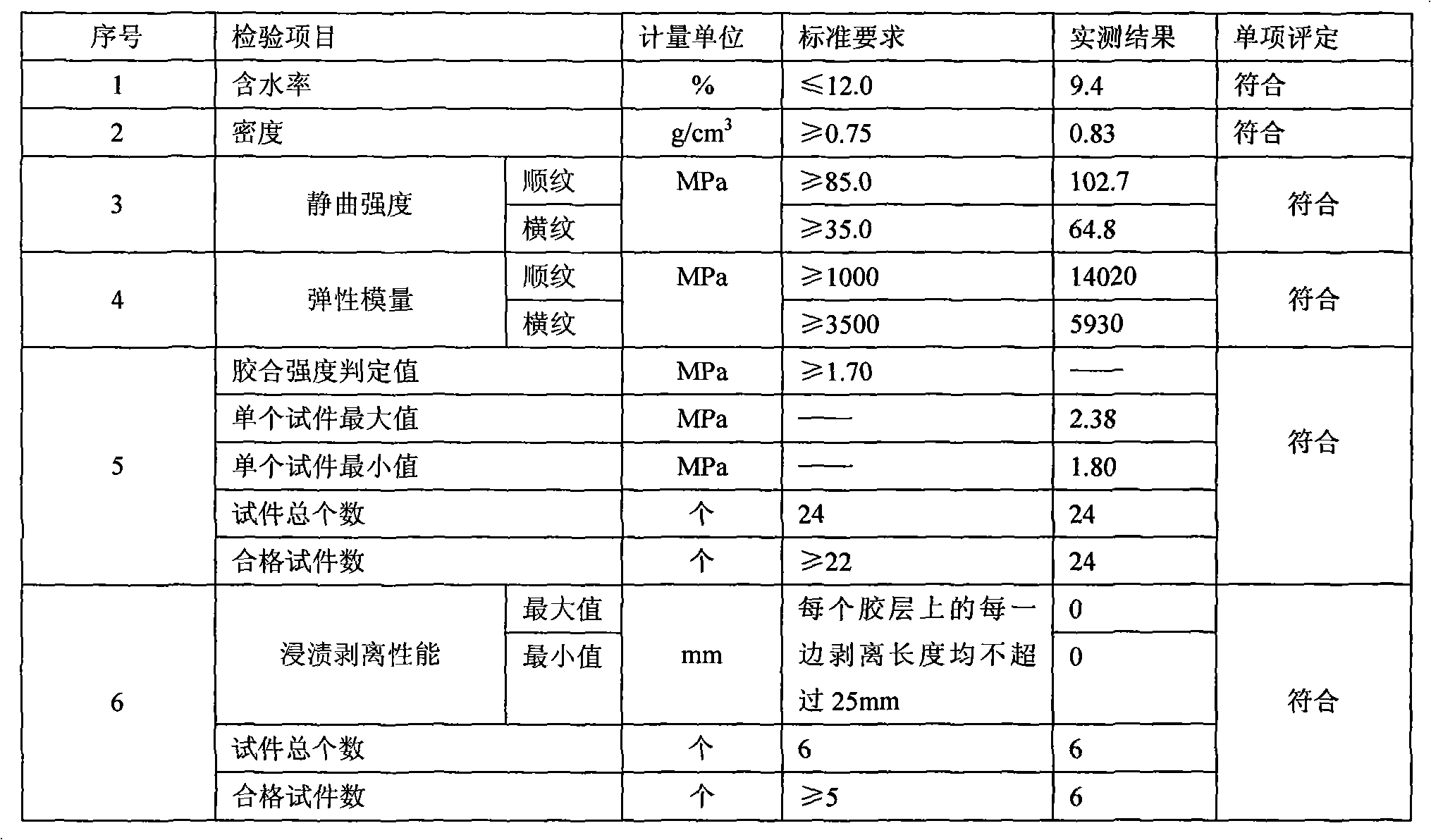Quaternary resin adhesive for manufacturing plywood board for bottom board of container
A container bottom plate and resin glue technology, applied in the direction of aldehyde/ketone condensation polymer adhesives, adhesives, adhesive types, etc., can solve the problems of high drying shrinkage, unbearable production enterprises, and environmental pollution, etc., to achieve glue The effect of strong synergy and energy saving in the manufacturing process
- Summary
- Abstract
- Description
- Claims
- Application Information
AI Technical Summary
Problems solved by technology
Method used
Image
Examples
Embodiment
[0037] The present invention is a kind of quaternary resin adhesive used for making plywood for container floor, which is composed of formaldehyde, urea, melamine and polyvinyl alcohol, and the molar ratio of each component is:
[0038] Formaldehyde: urea: melamine: polyvinyl alcohol = 1: 0.48: 0.157: 0.02;
[0039] 1. The composition of the adhesive is as follows:
[0040] component name
reactant weight
content
Weight of each component
Remark
urea
100%
800.0Kg
Invest in 3 times: 400, 360, 40
formaldehyde
37%
2250.0Kg
99.8%
550.0Kg
polyvinyl alcohol
100%
25g
[0041] 2. The adhesive is prepared by the following method:
[0042] (1) Check the reactor and related equipment and facilities to ensure safe, sensitive and reliable operation;
[0043] (2) Prepare various chemical raw materials according to the formula;
[0044] (3) Put...
PUM
| Property | Measurement | Unit |
|---|---|---|
| viscosity | aaaaa | aaaaa |
Abstract
Description
Claims
Application Information
 Login to View More
Login to View More - R&D
- Intellectual Property
- Life Sciences
- Materials
- Tech Scout
- Unparalleled Data Quality
- Higher Quality Content
- 60% Fewer Hallucinations
Browse by: Latest US Patents, China's latest patents, Technical Efficacy Thesaurus, Application Domain, Technology Topic, Popular Technical Reports.
© 2025 PatSnap. All rights reserved.Legal|Privacy policy|Modern Slavery Act Transparency Statement|Sitemap|About US| Contact US: help@patsnap.com

